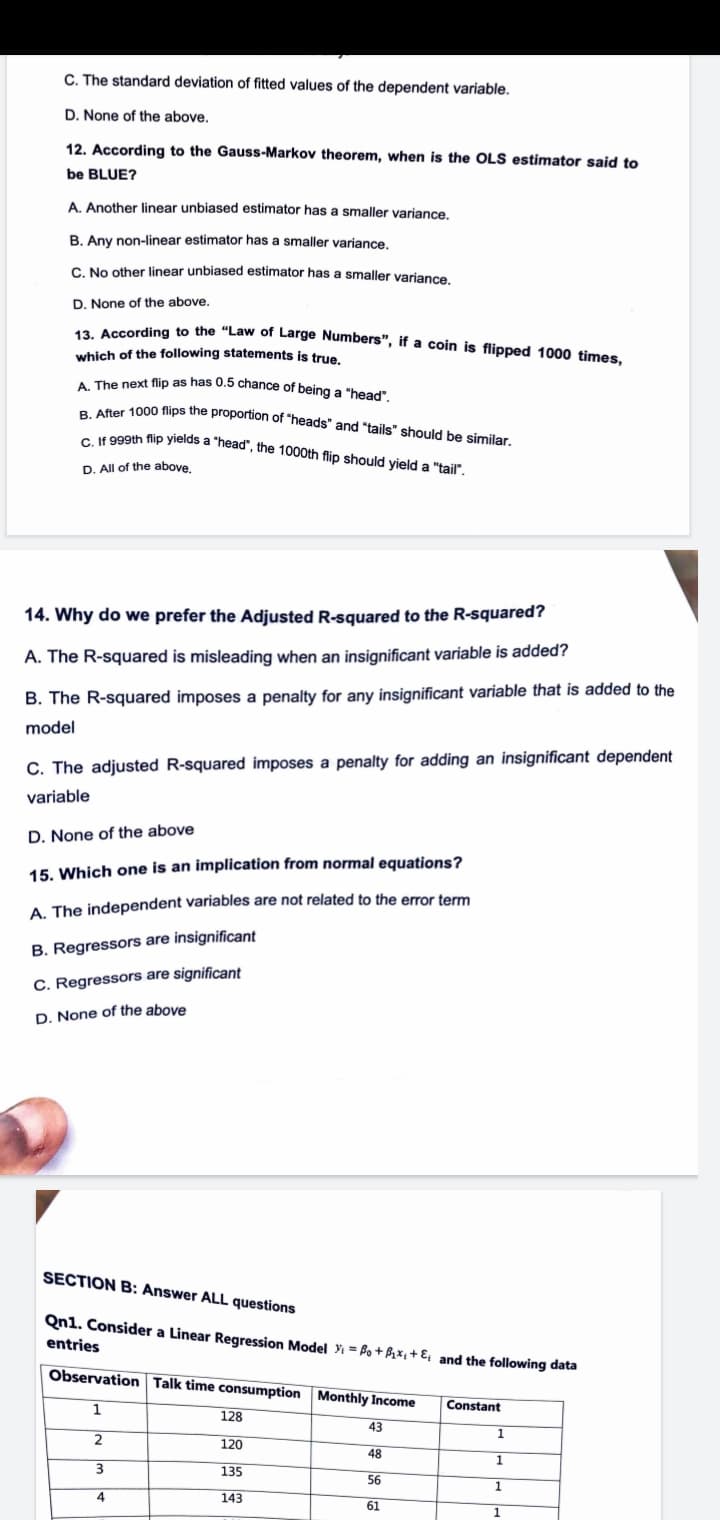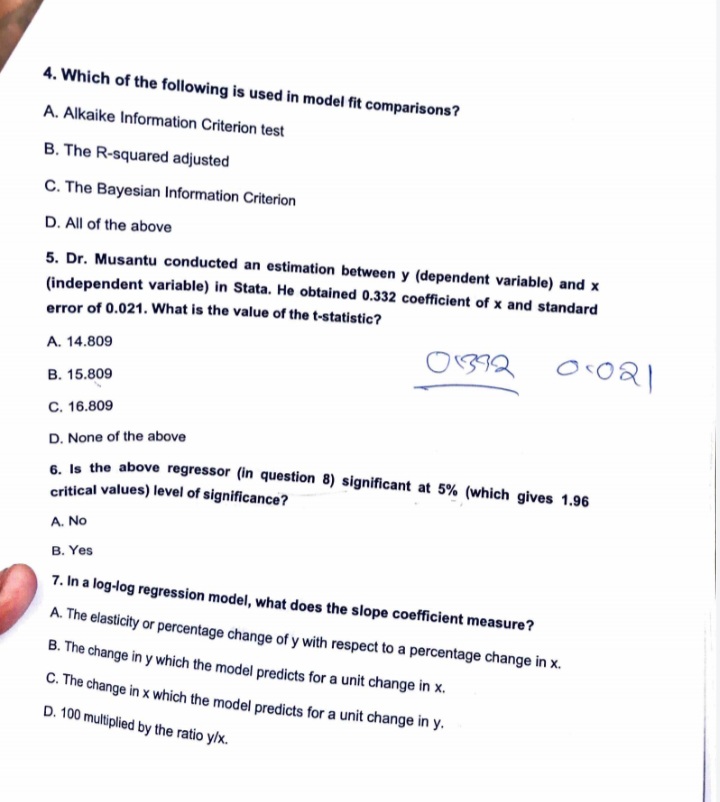C. The standard deviation of fitted values of the dependent variable. D. None of the above. 12. According to the Gauss-Markov theorem, when is the OLS estimator said to be BLUE? A. Another linear unbiased estimator has a smaller variance. B. Any non-linear estimator has a smaller variance. C. No other linear unbiased estimator has a smaller variance.
C. The standard deviation of fitted values of the dependent variable. D. None of the above. 12. According to the Gauss-Markov theorem, when is the OLS estimator said to be BLUE? A. Another linear unbiased estimator has a smaller variance. B. Any non-linear estimator has a smaller variance. C. No other linear unbiased estimator has a smaller variance.
Glencoe Algebra 1, Student Edition, 9780079039897, 0079039898, 2018
18th Edition
ISBN:9780079039897
Author:Carter
Publisher:Carter
Chapter10: Statistics
Section10.4: Distributions Of Data
Problem 19PFA
Related questions
Question

Transcribed Image Text:C. The standard deviation of fitted values of the dependent variable.
D. None of the above.
12. According to the Gauss-Markov theorem, when is the OLS estimator said to
be BLUE?
A. Another linear unbiased estimator has a smaller variance.
B. Any non-linear estimator has a smaller variance.
C. No other linear unbiased estimator has a smaller variance.
D. None of the above.
13. According to the "Law of Large Numbers", if a coin is flipped 1000 times,
which of the following statements is true.
A. The next flip as has 0.5 chance of being a "head".
B. After 1000 flips the proportion of "heads" and "tails" should be similar.
C. If 999th flip yields a "head", the 1000th flip should yield a "tail".
D. All of the above.
14. Why do we prefer the Adjusted R-squared to the R-squared?
A. The R-squared is misleading when an insignificant variable is added?
B. The R-squared imposes a penalty for any insignificant variable that is added to the
model
C. The adjusted R-squared imposes a penalty for adding an insignificant dependent
variable
D. None of the above
15. Which one is an implication from normal equations?
A. The independent variables are not related to the error term
B. Regressors are insignificant
C. Regressors are significant
D. None of the above
SECTION B: Answer ALL questions
Qn1. Consider a Linear Regression Model Y₁ = Bo+₁x₁+₁ and the following data
entries
Observation Talk time consumption Monthly Income
Constant
1
128
43
1
2
120
48
1
135
56
143
61
3
4
1

Transcribed Image Text:4. Which of the following is used in model fit comparisons?
A. Alkaike Information Criterion test
B. The R-squared adjusted
C. The Bayesian Information Criterion
D. All of the above
5. Dr. Musantu conducted an estimation between y (dependent variable) and x
(independent variable) in Stata. He obtained 0.332 coefficient of x and standard
error of 0.021. What is the value of the t-statistic?
A. 14.809
01392
B. 15.809
C. 16.809
D. None of the above
6. Is the above regressor (in question 8) significant at 5% (which gives 1.96
critical values) level of significance?
A. No
B. Yes
7. In a log-log regression model, what does the slope coefficient measure?
A. The elasticity or percentage change of y with respect to a percentage change in x.
B. The change in y which the model predicts for a unit change in x.
C. The change in x which the model predicts for a unit change in y.
D. 100 multiplied by the ratio y/x.
0.021
Expert Solution
This question has been solved!
Explore an expertly crafted, step-by-step solution for a thorough understanding of key concepts.
Step by step
Solved in 2 steps

Recommended textbooks for you

Glencoe Algebra 1, Student Edition, 9780079039897…
Algebra
ISBN:
9780079039897
Author:
Carter
Publisher:
McGraw Hill

Glencoe Algebra 1, Student Edition, 9780079039897…
Algebra
ISBN:
9780079039897
Author:
Carter
Publisher:
McGraw Hill